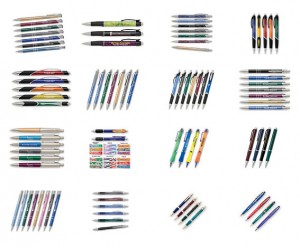Would You Rather Have a Client for Life…Or ALIENATE a Client for Life?
I sent an article around by Seth Godin, talking about how bullying buyers of expensive items shot themselves in the foot when they try to tear down the seller, or the quality of the item.
My friend Jacqueline Church Simonds from Beagle Bay Books responded with a story of how Mitchell Volvo in Simsbury CT, earned her undying love:
After we expressed interest in the V70 wagon, the dealer sat us down and said, “You’re intelligent, educated buyers. You know how to look on the Internet and see what my competitors are asking for in 5 surrounding states. Here’s the price that makes money for me and gives you a deal besides.”
The only dickering we did was on my 100k Taurus. He was genuinely chagrined he could only give us $2k trade-in on it. Since I’d been trying to sell it for 6 months, I caved. It was better than having it towed.
I’ve yet to find a dealer who treated me as fairly.
Thirteen years later, she still sings that dealer’s praises. Isn’t that what you want your clients and customers to do?
By contrast, I had such a bad experience in 2003 at Northampton Toyota (since sold to a dealer organization that I have no complaints about) in Massachusetts that I wouldn’t even go back there for a tube of touch-up paint until the dealership was sold and the management changed. I won’t give you the whole sordid story, but here’s one piece of it: the phone call a couple of weeks into the process that said “you have 24 hours to get your car out of our lot, and by the way, the engine is in pieces in the trunk.”
Amazingly, when we went in to a local used car dealer to see about replacing this car, he said, “it’s only got 71,000 miles and all it needs is a new engine? You could drive that car for many more years!” He actually brokered a used engine for us and arranged for a specialized shop to install it—giving up an easy sale but earning a lot of referrals from us over the coming years. And he was right; we drove that car eight more years, until 2011.
The ultra-shabby weeks-long encounter with Northampton Toyota’s service department was so bad that I wrote a five-page letter to Toyota’s vice president for US customer service. The response I got from them was too little and waaaay too late (two months to get a form response asking me to call a customer service center that turned out to be in India, with a representative who had not seen and could not access my letter—and another two months to get the letter with the inadequate and inappropriate make-good).
So what did I do the next time I needed a car, a year and a half after this incident? After driving nothing but Toyotas and one Toyota clone (labeled as a Chevrolet Nova) since 1982, I took my money elsewhere, because earning my loyalty was obviously not a priority for this company. I bought a brand new car that for the first time in 22 years, was not a Toyota and not designed by Toyota. Then, last year, the replacement engine on the old Corolla finally gave out, when the car was 14 years old and the odometer read something like 167,000 miles. We did buy a Toyota to replace it, but we bought it used, so no money in Toyota’s pocket on that sale. And just last week, I helped my stepfather buy a new car. He’s had several Toyotas over the years—but he bought a brand new Honda.
In other words, in the past 9 years, the imbecilic treatment we received from the service department combined with the laughable response from corporate has diverted three large sales away from Toyota—three sales that would have been theirs for the taking, if they’d only just made us feel that we mattered.

